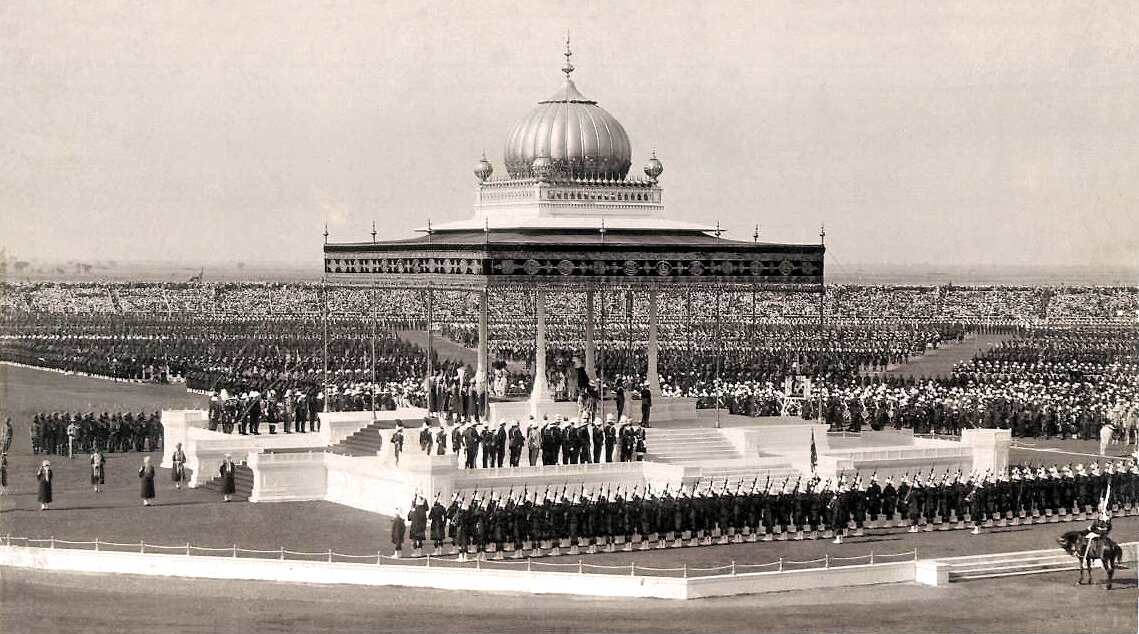Of timeless relevance
During the Mughal rule, under the Marathas, as part of the NWP and British Punjab, and as a Chief Commissioner’s province later — Delhi always continued to bustle with administrative, economic and military activities

In his book, 'Delhi: The Capital of India', first published in 1918, John Capper FRAS wrote:
'It is therefore no wonder that from time immemorial, Delhi has been the chief city of Bharat. All roads from the four points of the compass converged towards Delhi, and from Delhi marched forth in all directions hosts of army and caravans of merchants to conquer territories and capture markets. The Musalmans in their onward march of conquests cast covetous eyes on Delhi, and for the first few Islamic centuries while a large portion of the then known world had come under the dominance of Islam, Delhi was 'hanoz door' to the Musalaman conquerors. It was round Delhi that the Hindu kings made their last stand against the Muslim invasion. It was the capture of Delhi that brought India under the Muslim rule. Again, it was Delhi that the Mahrattas attempted to take to put a coping stone to the empire they had built over a large part of Western and Central India. The Mahrattas had captured the city in 1759, but were defeated by Ahmad Shah Durrani in 1761, re-entered the city in 1771 and restored Shah Alam to power who handed over the Diwani of Bengal, Bihar and Orissa to the EIC. From 1788 to 1803 – they were the supreme power of North India, but because of the failure to include Delhi in it, the Mahratta rule dwindled into a number of principalities, instead of becoming an empire of India that it bid fair to become at one time. After the Anglo Maratha war of 1803, it became part of the Northwest Province with Agra as the capital. It was first placed under General David Ochterlony as the Resident and he was responsible for 'advising in the governance, succession issues and protection of the Ruler and the state from external aggression'. Even as the seat of Mughal power was in a state of terminal decline, the Mughal Badshah was the 'de jure' sovereign, and even the EIC derived its authority from this seat. Ochterlony adopted an Indo Persian bearing, learnt Persian and Urdu, held mushairas and promenaded his thirteen Begums on elephants every evening and called himself Nasir ud Doula (protector of the state). When the last Moghul, Bahadur Shah ascended the throne in 1837, a royal salute was fired at both Delhi and Agra.
It was Delhi that the sepoy rebels in 1857 betook themselves to and sought the tottering shadow of the nominal ruler of Delhi to give their revolt a higher significance. It was on the recapture of Delhi that British rule was firmly established. And it continued to be the site for the performance of the principal and most important functions of the capital town of the Indian empire even when the actual seat of government (Calcutta) was a thousand miles away from it.
As Simarpal Singh writes in his book, 'The Siege of Delhi': "In 1803, the Company considered it expedient to retain the emperor as a puppet — for a time at least — rather than abruptly terminating the dynasty. The holding of the Great Moghul as a pensioner under its protection gave the company a significance, prestige and most importantly legitimacy to their status as the new paramount power in India"
Be that as it may, after the reconquest of Delhi, it was detached from the NWP and Oudh, and made part of the newly constituted state of British Punjab which had been annexed by the East India Company in 1849. In 1858, Punjab, along with the rest of British India, came under the direct rule of the British crown. It had an area of 3,58,354.5 square km and five administrative divisions – Delhi, Jullundur, Lahore, Multan and Rawalpindi – and a number of princely states. From 1858 to 1911, Delhi was only a division of Punjab with its capital at Lahore. However, its significance lay in the fact that the Delhi Durbar of 1877 was the venue for the proclamation of 'Queen of Great Britain and Ireland' as the 'Empress of India'. Viceroy Lord Lytton
held an Imperial Assemblage at Delhi to which all Governors, Lt Governors, Heads of Administrations, Ruling Chiefs, Princes and Nobles were invited. On the occasion of the second coronation Durbar in 1911, King George V announced Delhi as the new
capital of India. In 1912, Delhi became a Chief Commissioner's province with William Malcolm Hailey (on whom the Hailey Road is named) as the first incumbent. The Government of India Acts of 1919 and 1935 classified Delhi as a chief commissioner's province, which meant Delhi was directly ruled by the governor-general through his or her representative — the chief commissioner, a senior civil servant appointee who reported directly to the governor-general.
Views expressed are personal




